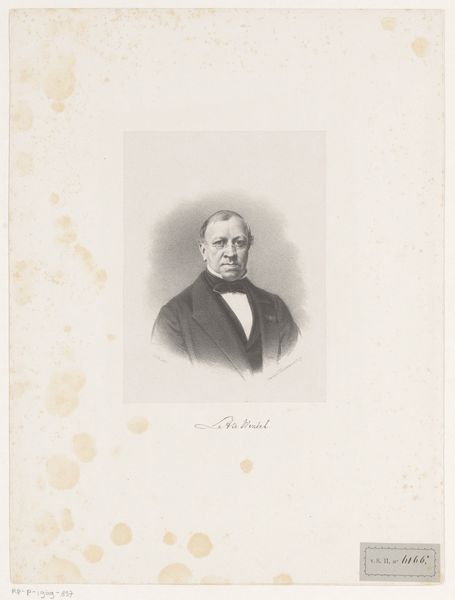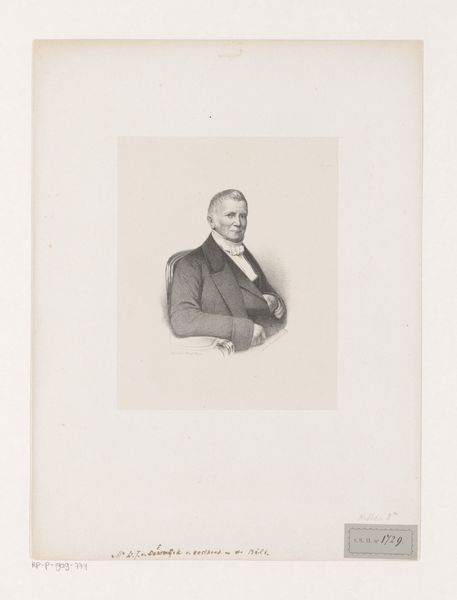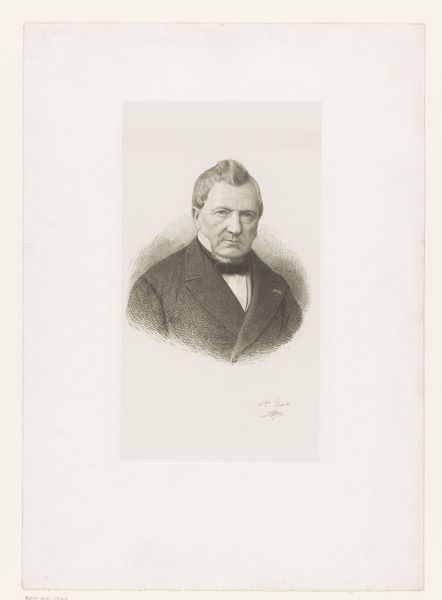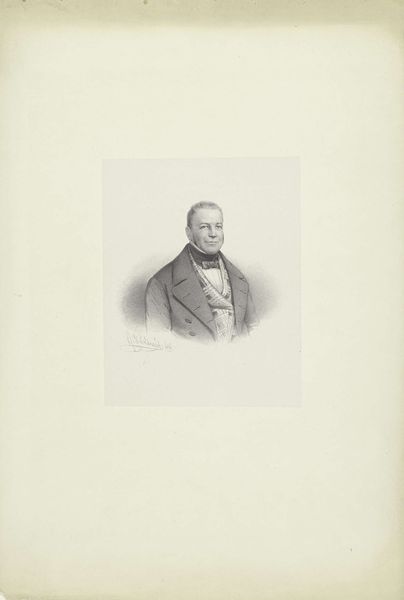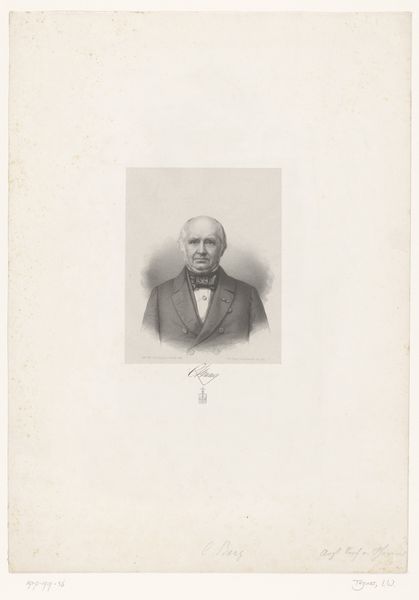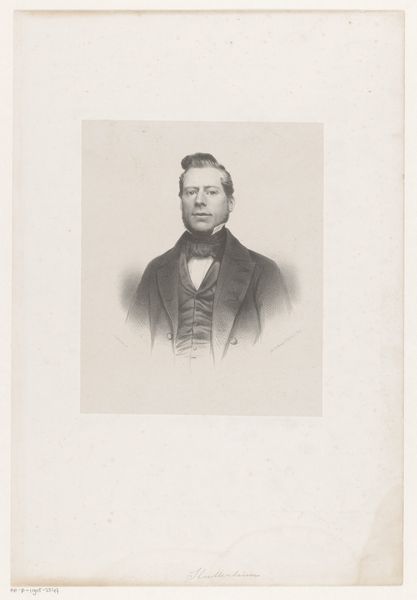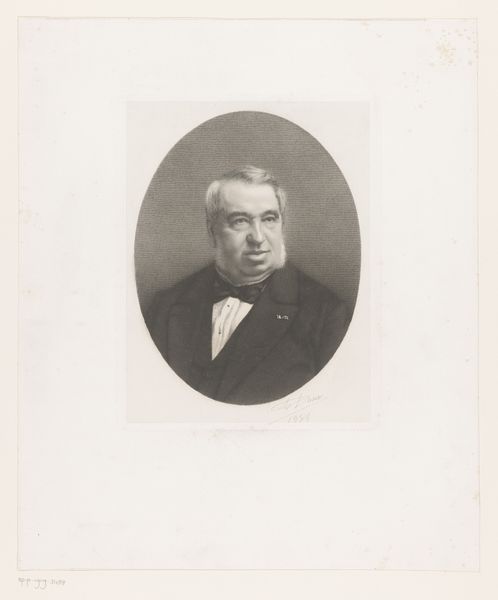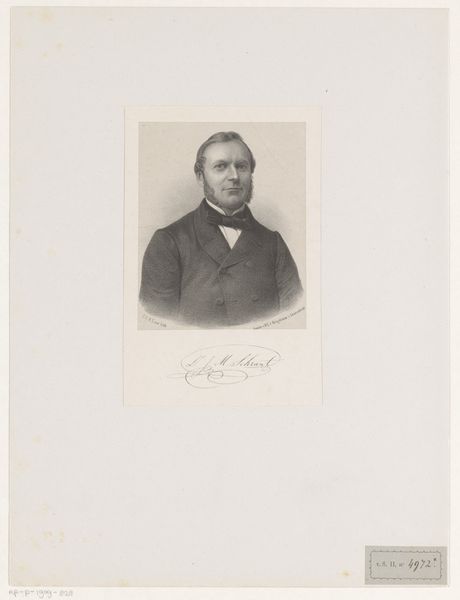
print, engraving
#
portrait
# print
#
engraving
#
realism
Dimensions: height 460 mm, width 355 mm
Copyright: Rijks Museum: Open Domain
This portrait, possibly of W. Ph. J. van Dielen, was created by Anthony Grolman using the technique of lithography. Lithography is a fascinating process, because it relies on the simple, elemental fact that oil and water don't mix. The image is drawn with a greasy crayon onto a flat stone or metal plate. Then, water is applied to the surface, which is repelled by the greasy areas but retained elsewhere. When ink is rolled over the surface, it sticks only to the crayon marks. This allows the image to be printed. Here, we see how Grolman used lithography to achieve a remarkable level of detail. The subtle gradations of tone give the man a real presence. The lithographic process, with its reliance on chemical reactions and mechanical reproduction, democratized image-making, making it more accessible and affordable. This print, therefore, is not just a portrait but also a product of its time, reflecting the rise of industrial processes in the art world. So, thinking about materials and making helps us appreciate the work's broader social and cultural context.
Comments
No comments
Be the first to comment and join the conversation on the ultimate creative platform.
